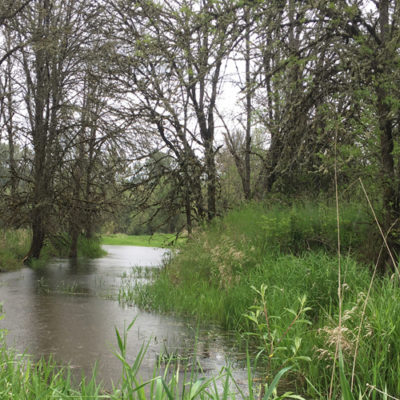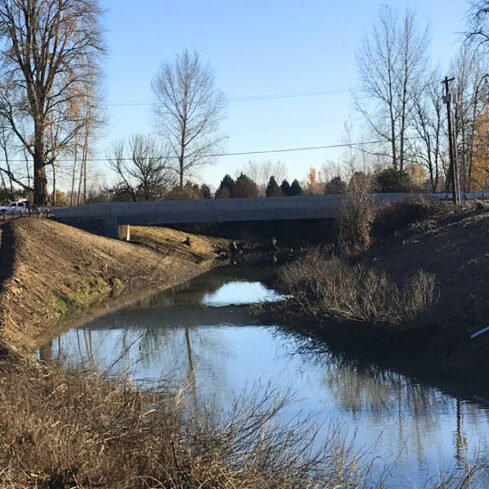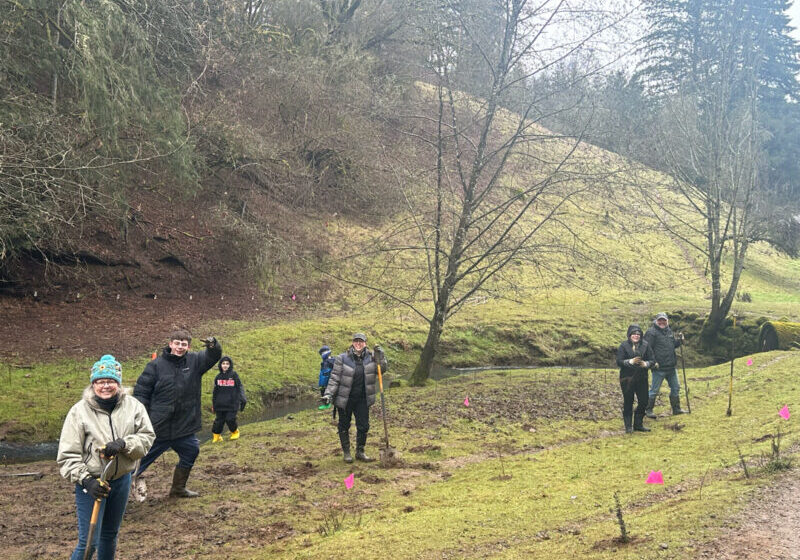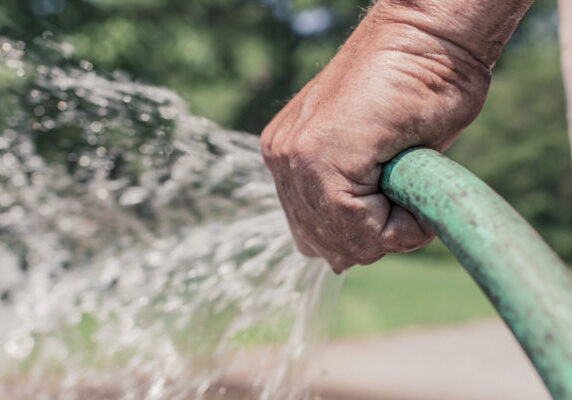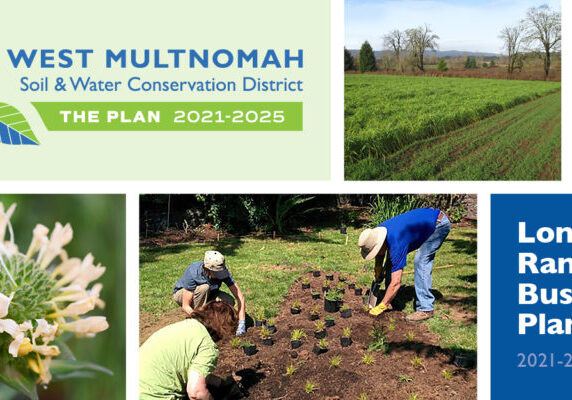Clean Water
Conservation Priorities
Riparian areas
Healthy riparian areas include a diversity of native plants that stabilize streambanks and support hundreds of different species of wildlife, large to small—thousands if you count the many kinds of insects and other invertebrates! Here you can find frogs, salamanders, crayfish, and birds that perch, feed, rest, and nest. You can also find mammals like beavers and deer that depend on the water and plants for cover, migration corridorsCorridors Wildlife corridor: a stretch of habitat that connects natural areas separated by human land use, and food. Learn more about what riparian areas provide.
An intact riparianRiparian areas The land alongside a stream, creek, river, or floodplain area is essential to a well-functioning stream ecosystem. Riparian plants cast shade over the stream and help keep it cool and free of algae. The plants can filter water that runs off the landscape before it reaches the stream channel. They also help hold stream banks in place to limit erosion and sediment in streams.
Risks to clean water
Pollution
When rainwater flows down streets, driveways, and sidewalks, or across farm fields, it can pick up pollutants and soil particles along the way. Not all pollutants that enter storm drains are filtered out by the waste water treatment system. In many cases, stormwater flows directly to wetlands, streams, and rivers, and sometimes it even reaches our ground water or well water.
Pollutants of concern include:
-
Chemicals
Pesticides, heavy metals from vehicle pollution, mercury in the atmosphere, and other chemicals are often toxic to animals that live in or drink or feed from streams—this can ultimately affect all wildlife and humans who eat the fish and consume food irrigated by such water.
-
Fertilizers
Fertilizers, when applied in excess, often end up in our waterways and do damage, such as fueling growth of harmful algae and limiting oxygen supply to fish and other aquatic animals.
-
Nitrogen and nitrates
Excess nitrogen and nitrates from farm fields can make their way into ground water and pollute wells.
-
Pet and livestock waste
Pet and livestock waste, which contains harmful bacteria that can get washed into bodies of water, can make people and pets sick.
-
Plastics and other litter
Plastics and other litter contain harmful compounds and break down into tiny pieces. These particles can make their way to the river or ocean where they are consumed by and harm aquatic animals. The particles then end up in our food chain and inside our bodies.
Erosion
Runoff from rain affects streams and water quality in both urban and rural settings. Streambanks with too few trees, shrubs, and other vegetation to hold the soil in place more easily erode into the stream and create “muddy” water. While some erosion is natural, too much sediment makes for poor habitat for aquatic animals. Maintaining and restoring a wide variety of native riparian plants creates a vegetated buffer to slow, filter and absorb rain water and minimize erosion. Cover crops on farm fields and in gardens help keep vital soil in place during the rainy months.
Effects of climate change
Extreme weather events around the world are now more common and are affecting our aquatic ecosystems. Summer in the Pacific Northwest is getting hotter and drier. We are also experiencing more intense and extended periods of droughtDrought A longer than normal time with not enough rain. This makes our rivers, wetlands, and floodplains warmer and drier during the hot season. Such conditions are bad for native fish and other animals and plants not yet adapted to these changes. Winter and spring are bringing more intense rain storms to our area with increased flooding and erosion. These storms affect water quality, quantity, and availability. Learn how we are adapting our work to climate change.
What you can do
-
Stormwater & erosion control
There are many things you can do reduce runoff, erosion, and non-point source pollution.
Read more -
Cover cropping
Cover crops are good for soil and water quality. They can prevent erosion and help keep nutrients in the soil instead of washing into streams or seeping into groundwater.
Read more -
Minimize the impacts of houseboat living and boat useage
-
Farm manure management
Learn how to properly store and compost farm manure.
View and download resource
Related services
Find out if you're in our service area.
We have several services to help you with clean water conservation:
Clean Water resources
-
Tips for Streamside Landowners in Multnomah County
Learn how to protect your land and streambanks from erosion and other riparian area tips.
View and download resource -
Guide for Using Willamette Valley Native Plants Along Your Stream
Find information on natural landscaping, streambank stabilization, and landscaping with native plants for wildlife habitat.
View and download resource -
Riparian Tree & Shrub Planting in the Willamette Valley
Learn about planting trees and shrubs to restore streamside areas, enhance fish and wildlife habitat, improve water quality, and achieve other environmental benefits.
View and download resource -
Managing invasive blackberry in riparian areas
Find information on how to manage Himalayan blackberry in western Oregon riparian areas.
View and download resource -
Classes for Properties with Private Wells
Free online education and resources for well owners from PrivateWellClass.org.
View site and sign up. -
Rural Living Handbook For Multnomah County
Tips for rural living in Multnomah County. Request a printed copy of Multnomah County Rural Living Handbook by visiting our resources page.
View and download resource -
Clean Water Loan Program
Learn about financing your septic repair or replacement.
Visit Craft3.org -
Oregon Water Resources Department
Find information about groundwater and wells.
Visit Oregon.gov
Staff contact
Kammy Kern-Korot
Senior Conservationist
Contact me about:
Oregon oak, savanna, wetlands and riparian habitats; Emerald Ash and Mediterranean Oak Borers; conservation planning and native plantings for pollinators and other wildlife on rural lands.Scott Gall
Farm & Soil Conservationist
Contact me about:
Soil health; Farms and livestock; Equity and inclusionLaura Taylor
Forest Conservationist
Contact me about:
Forest and woodland health; Wildfire risk in rural forests; Plants; Pollinators.
